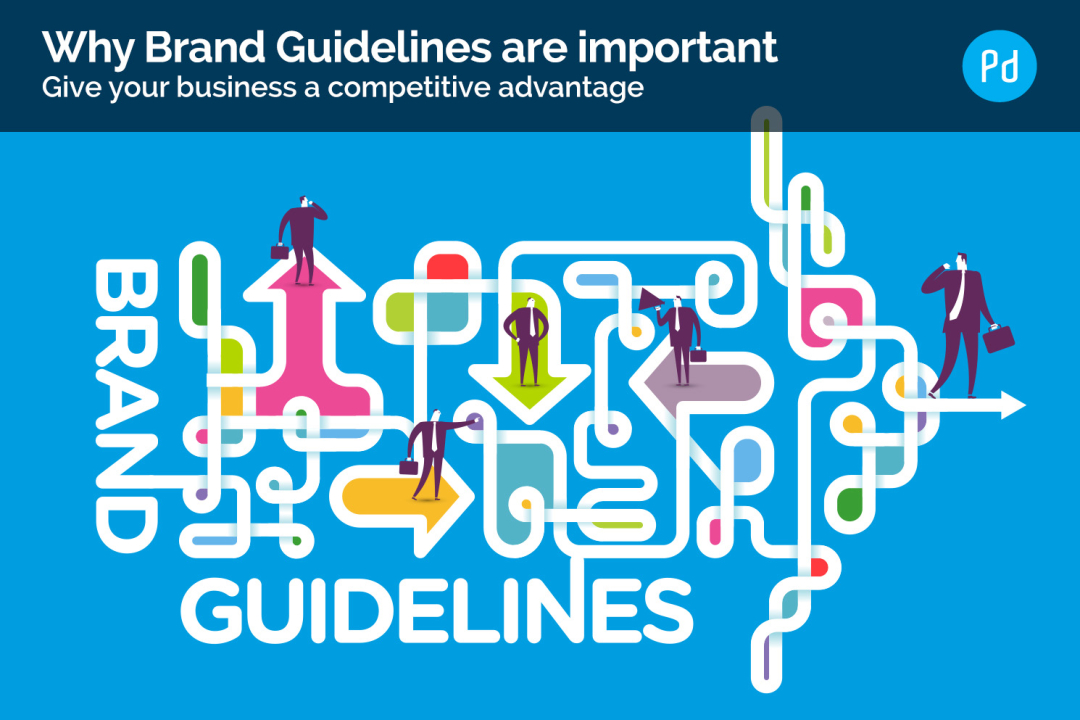A company’s brand is essentially its personality and in much the same way that a personality dictates who a person is and how they present themselves, the brand is the recognisable aspect of a business that will show your customers who it is and what it stands for. Over time if a business can build a strong brand it will lead to improved customer experience, conversion rates and brand loyalty.
What are brand guidelines
Commonly referred to as a “brand style guide” brand guidelines are a set of instructions, rules and recommendations on how to portray the brand. Good brand guidelines include examples of how to recreate a brand’s look and feel and could also include some rules as to what you shouldn’t do. You should think of brand guidelines as the personality of the brand – it will make your marketing materials instantly recognizable to existing customers and should convey your business effectively.
All of this helps maintain consistency so that consumers get to know your brand and learn to trust it.
Why are brand guidelines important?
Brand guidelines are important in any industry, crucial to give a competitive advantage when comparing competing businesses. They are most crucial for larger organisations that have a large number of stakeholders within the business. If there were only one person in charge of projecting a company’s image or aesthetics, then they would be able to make sure all brand elements would be applied consistently. However, for larger entities, having concrete style guidelines in place makes communicating these requirements much easier across business departments or locations.
Brand guidelines also improve the efficiency of a business. They help to avoid confusion internally when designing and producing communication material. This saves time and effort as there is effectively already a clear blueprint in place for how the company should be represented.
Whilst the above is very important in terms of creating a consistent experience for your customers a key point to remember is not to allow brand guidelines to limit or restrict the creativity of your marketing. Its purpose is to ensure that anyone who comes in to contact with it feels comfortable with your brand.
What should be included in brand guidelines
There are no fixed rules as to what should or should not be included within the guidelines. One thing is clear, the larger your business and the more you rely on different forms of media to portray your brand, you will undoubtedly need more extensive brand guidelines. This will help achieve a more consistent application of your corporate and brand identity across all touch points.
The main component that forms the glue for all these items is your corporate identity. The ingredients used to create a successful corporate identity in a very considered and careful measure, are; your company logo, corporate colours, fonts, images and illustration styles, etc. These can then be implemented consistently on the following:
- Communications material; printed brochures, case study documents, product datasheets, product catalogues, event and exhibitions display graphics.
- Online; website, mobile site, e-commerce, Apps, social media, online advertising
- Store/Shop; people, uniforms, signage, vehicle livery, price ticketing, video presentations
- Packaging; product labelling, sampling, user manuals
- Internal Communications; merchandise, training manuals, values, mission and vision statements.
It’s important to note that the extent and amount of detail within a company’s brand guidelines will depend on the following:
- The size of the business or group of businesses
- How many people are employed by the business
- If you use multiple designers to create your material
- The variety of marketing material that needs to be generated
Visual Identity Guidelines
Visual identity guidelines are where the rules for the look and feel of your company marketing materials are written. They form the basis for designing display graphics for events and exhibitions. They represent the model for designing your store or eCommerce platform. Visual identity guidelines give precise instructions for using logos, colours and fonts correctly. Clear details for typography styles and font sizes. Colour palettes, background patterns and even the visual style/composition of photography are to be considered carefully. At Palmiero Design our creative team are highly experienced at working with visual identity guidelines to ensure that your brochure or catalogue designs are sympathetic to your brand.
A successful visual identity that has been carefully considered when designed will translate well across different mediums, with the theme continuing through social profiles and more. This helps the customer feel safe in an environment which is familiar and a brand that it trusts. This can help increase conversion rates and sales exponentially.
Tone of Voice
Building a brand requires more than just creating a style and sticking with it. You need to decide on the tone of voice you will use to deliver the message. The tone of voice will apply to every verbal or text interaction a business has with its customers.
It starts with deciding on your target audience. You would speak very differently to teenage girls compared to men over the age of 65.
Keep all this in mind when you choose your tone. Consider the vocabulary very carefully and the words you would rather avoid too. For the youth/teenager market, you might consider using slang or pop culture references. For older generations, the vocabulary may be more conservative with clearer to understand, uncomplicated sentences. Whichever audience, you might mention activities they enjoy or use expressions they find familiar.
Keep to these principles across all marketing channels including the likes of Twitter or emails to continue developing your ‘brand personality’.
Brand Guideline Recommendations
When a business is developing its brand guidelines it’s important to identify the aspects of the business that make it what it is. This might be customer experience, a distinct colour or even something like a smell (Krispy Kreme), which can then be used to inform the guidelines.
Essentially, whatever you want your business to be known as or known for, then it’s usually a good idea to treat them as guidelines.
If you’re looking for help and support with identifying and finalising your brand guidelines then get in touch with us today.


